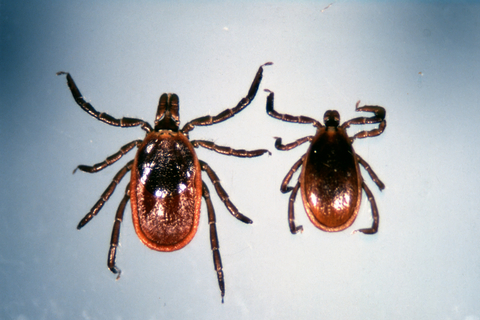From the UofM Extension Office:
Quick facts
- The two most common ticks found by humans are:
- American dog tick, Dermacenter variablis, or wood tick.
- Blacklegged tick, Ixodes variablis (formerly known as deer tick), which carries Lyme disease and other diseases.
- The brown dog tick is also found in Minnesota, but less commonly seen.
- To avoid tick bites:
- When in the woods, walk on trails and avoid moving through grassy areas.
- Wear protective clothing, such as long-sleeved shirts and pants that are light-colored.
- Use repellents like DEET or permethrin.
- Always follow instructions and read warnings on repellent labels.
Diseases carried by ticks
The American dog tick in Minnesota can carry Rocky Mountain spotted fever, though this is rare. For more information on Rocky Mountain spotted fever, see information at the Centers for Disease Control and Prevention (CDC).
The blacklegged tick carries Lyme disease and several other diseases. See the Minnesota Department of Health page on tickborne diseases.
High risk areas for tick exposure in Minnesota include the north central, east-central and southeastern regions of the state, also extending into some northwestern counties. Greatest risk is found within hardwood or mixed hardwood forests, which provide suitable habitat for blacklegged ticks.
Risk of bites from these ticks in Minnesota is highest during the spring, early summer, and fall months. Tickborne diseases have been increasing each year in the state.
A blacklegged tick can only transmit disease to humans through a bite. They can't do so by just crawling on a person. Even when biting, a blacklegged tick must stay attached for at least 24 to 48 hours to transmit Lyme disease (12 to 24 hours to transmit human anaplasmosis).
If you want to find out for sure what type of tick you've found, you can fill out a form and send it and the tick to the health department for proper identification. This helps the state monitor where ticks are active





No comments:
Post a Comment
Note: Only a member of this blog may post a comment.